If you enjoy watching birds and hearing their songs, adding a bird feeder is a great way to invite more birds into your yard. But did you know that different types of feeders attract different species of birds? Keep reading to learn about the 12 different types of bird feeders to attract a wide variety of birds.
1. Suet Feeder
Suet is made up of animal fat and ingredients like birdseed, peanuts, or cornmeal. This is an especially popular choice for birds during the winter when other food sources may be scarce.
These bird feeders feature a wire or mesh enclosure that can hold suet cakes. Birds can land on the feeder and access the suet cake through the mesh. However, suet feeders can also attract larger birds, such as hawks, and even squirrels and raccoons. Check your feeder often to make sure the suet is secured and hasn’t spoiled.
Best for attracting: woodpeckers, cardinals, nuthatches, blue jays, and chickadees
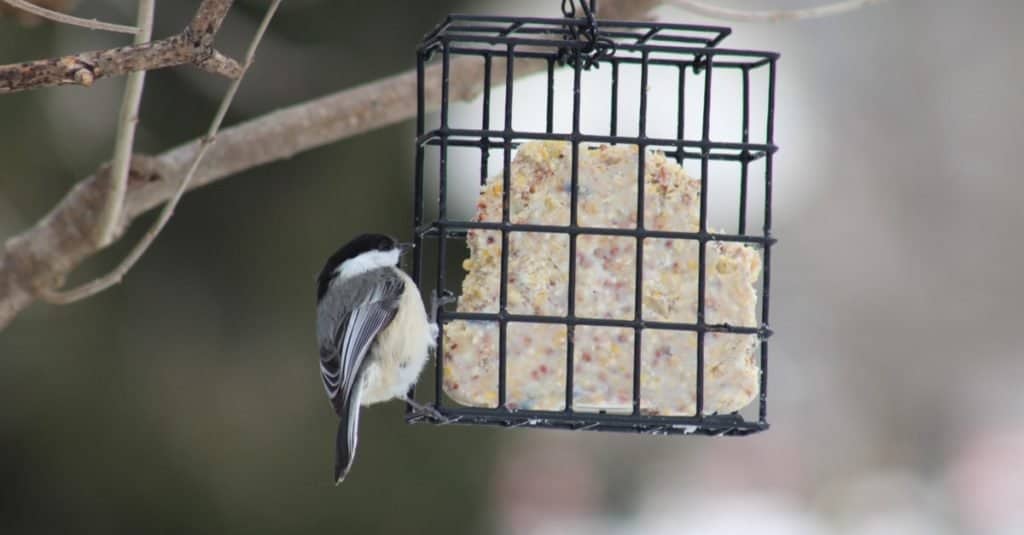
Try placing your suet feeder near a large tree to entice birds to eat.
©Wade Lamb/Shutterstock.com
2. Tube Feeder
This is a popular style of bird feeder that can attract several types of small and medium-sized birds. Tube feeders typically hang from trees or hooks and are made from sturdy plastic with openings that allow the birds to access the seeds inside.
The clear plastic makes it easy to tell when it’s time to refill the feeder. These types of bird feeders are usually easy to take apart for cleaning, and varieties made out of solid plastic make it harder for squirrels to pilfer the seeds.
Best for attracting: chickadees, sparrows, finches, and tufted titmice

Different types of seeds can attract different species of birds.
©donjd2 / CC BY 2.0 – License
3. Nectar Feeder
These specially designed bird feeders are perfect for attracting nectar-feeding birds like hummingbirds. Often designed like inverted bottles, these feeders simulate the experience of drinking nectar from a flower.
The best color choices for nectar feeders are bright red, orange, or yellow. You can fill your nectar feeder with a mix of four parts water to one part sugar. However, do not add red food coloring since this can be harmful to hummingbirds. Make sure to empty, clean, and refill your nectar feeder at least twice a week.
Best for attracting: hummingbirds and orioles
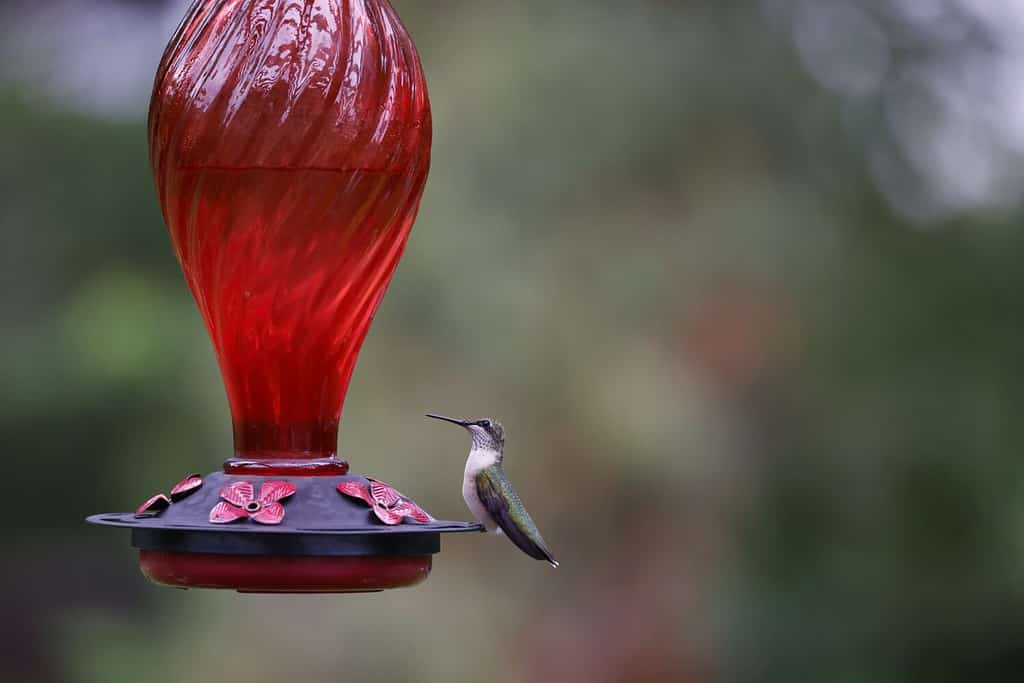
Nectar feeders often come in red, orange, or yellow to naturally attract hummingbirds.
©Randall Vermillion/Shutterstock.com
4. Hopper Feeder
This classic style of bird feeder is a popular choice for both birds and bird watchers. Hopper feeders feature a large container that can be filled with seeds. Birds can access the seeds from the tray at the bottom, and more seeds fall into the tray as the birds eat.
Hopper bird feeders are available in a variety of styles, although they can be more difficult to assemble or clean than other feeder styles. These feeders are generally hung from sturdy branches or hooks.
Best for attracting: cardinals, buntings, sparrows, tufted titmice, and a wide variety of birds
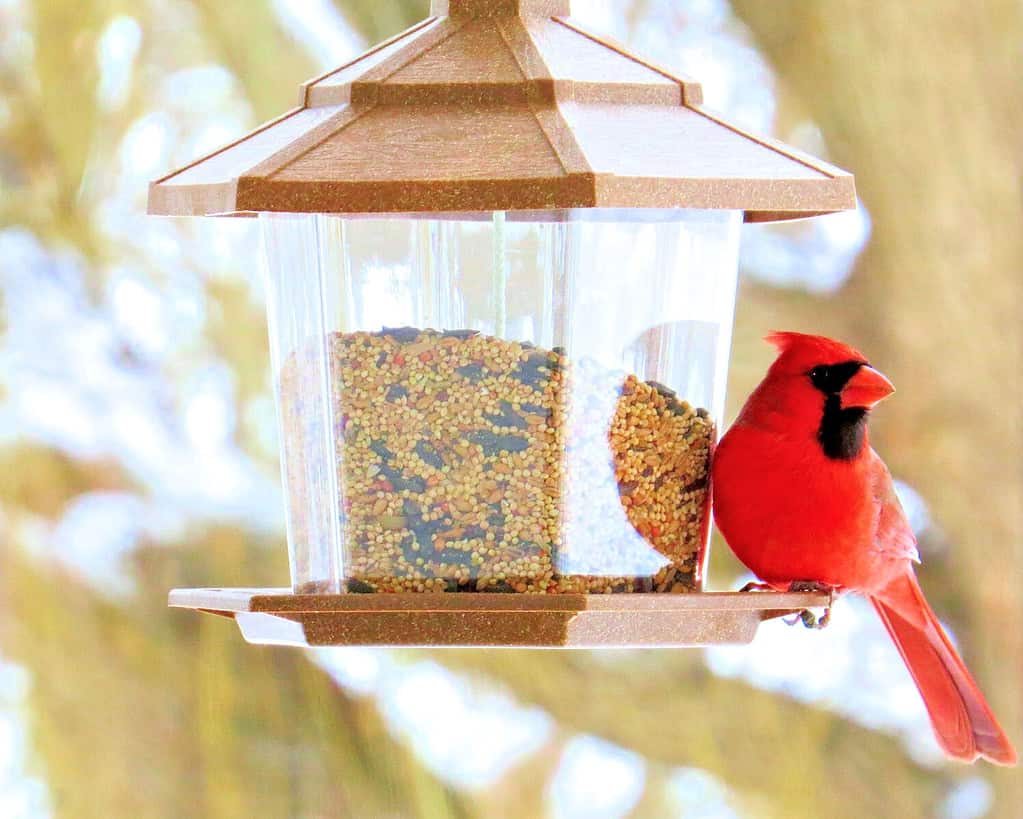
Hopper feeders hold more seeds than other styles, making them a lower-maintenance bird feeder choice.
©MLHoward/Shutterstock.com
5. Oriole Feeder
Orioles are colorful songbirds that primarily eat fruits, nectar, and small insects. If you’d like to attract these birds to your yard, try putting out a special feeder just for them.
Look for an oriole feeder that features the color orange since this color attracts the birds. Oriole feeders typically also have areas to hold orange wedges, dishes of jelly, or mealworms — all favorite foods for orioles. Choose a design that will be easy to wash since these foods leave a sticky residue that can attract unwanted bugs.
Best for attracting: orioles

Oriole feeders typically have space for fruit slices and bowls of jelly to entice the birds.
©J. Omar Hansen/Shutterstock.com
6. Peanut Feeder
These ring-shaped feeders are designed to hold peanuts and will make your backyard a popular spot for birds. Unfortunately, these feeders can also be popular with squirrels, so be prepared to move the feeder when they discover your peanut stash.
Peanut feeders have gaps big enough for birds to maneuver the treats out, and a space at the top of the feeder makes it easy to refill. Be sure to use unsalted peanuts and empty out the bird feeder after it rains to avoid mold or mildew.
Best for attracting: blue jays, cardinals, finches, woodpeckers, and magpies
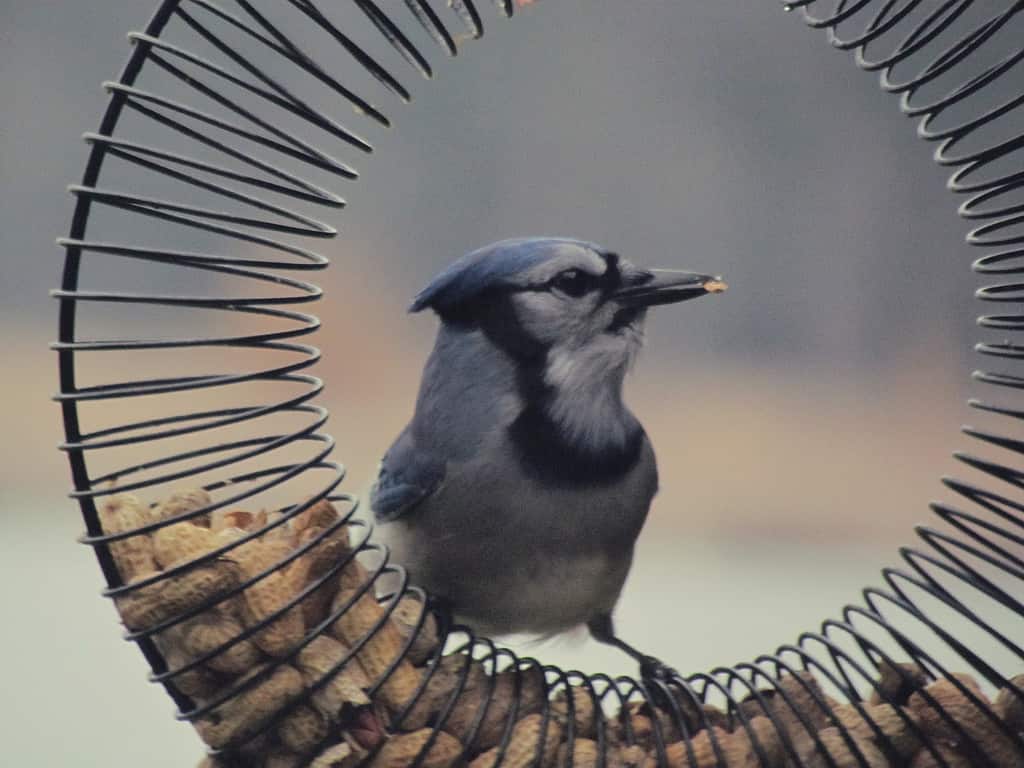
Peanut feeders are easy to hang and fill, although they can attract squirrels.
©katerha / CC BY 2.0 – License
7. Window Feeder
If you’d like to get a closer view of the birds visiting your yard, you can install a window-mounted feeder. These types of feeders typically use suction cups to stick to the outside of a window, offering unique views of birds as they eat.
When choosing a window feeder, check to make sure the suction cups will provide enough support to keep it mounted. Look for features like perches for the birds to sit on, removable trays, and drainage holes.
Best for attracting: smaller birds such as bluebirds and sparrows
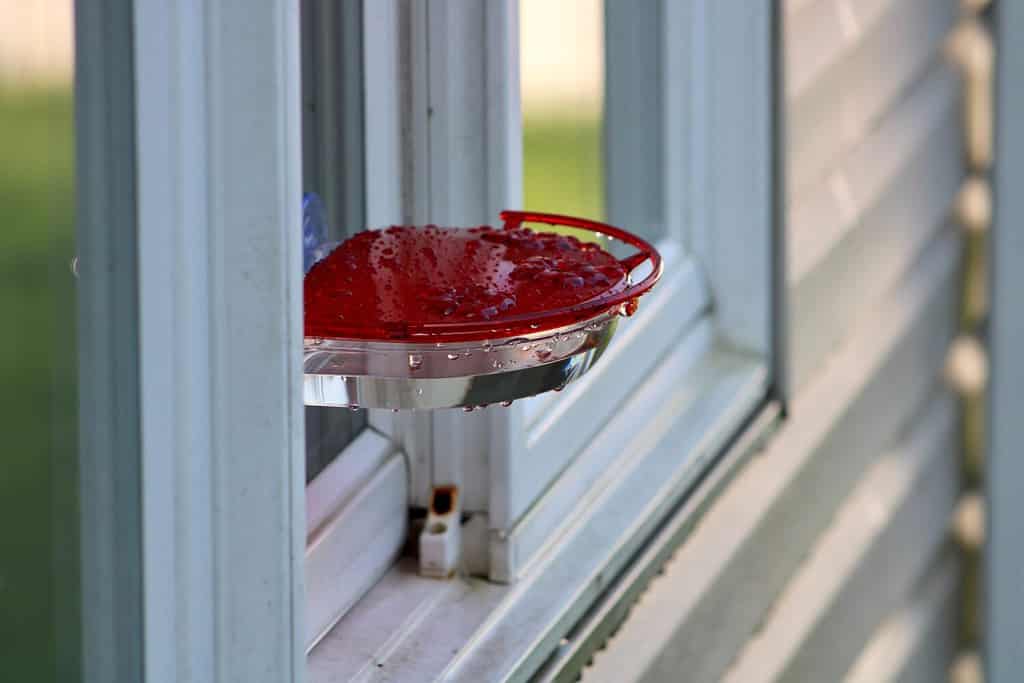
Due to their small size, window feeders typically deter larger birds.
©Jaclyn Vernace/Shutterstock.com
8. Nyjer Feeder
There are two style options for Nyjer feeders: a sock-like feeder and a tube-style feeder. Nyjer is a very small, black seed that comes from African yellow daisies. Somewhat confusingly, Nyjer seeds are often called thistle seeds, although they are not related to the thistle.
The tight mesh of the sock-style feeder helps keep the tiny seeds contained, which helps offset this type of seed’s relatively high cost. Nyjer seeds are popular with finches and other species of seed-eating birds that can cling to the feeder. Its design works to deter squirrels and birds that require perches while eating.
Best for attracting: finches, sparrows, buntings, and towhees
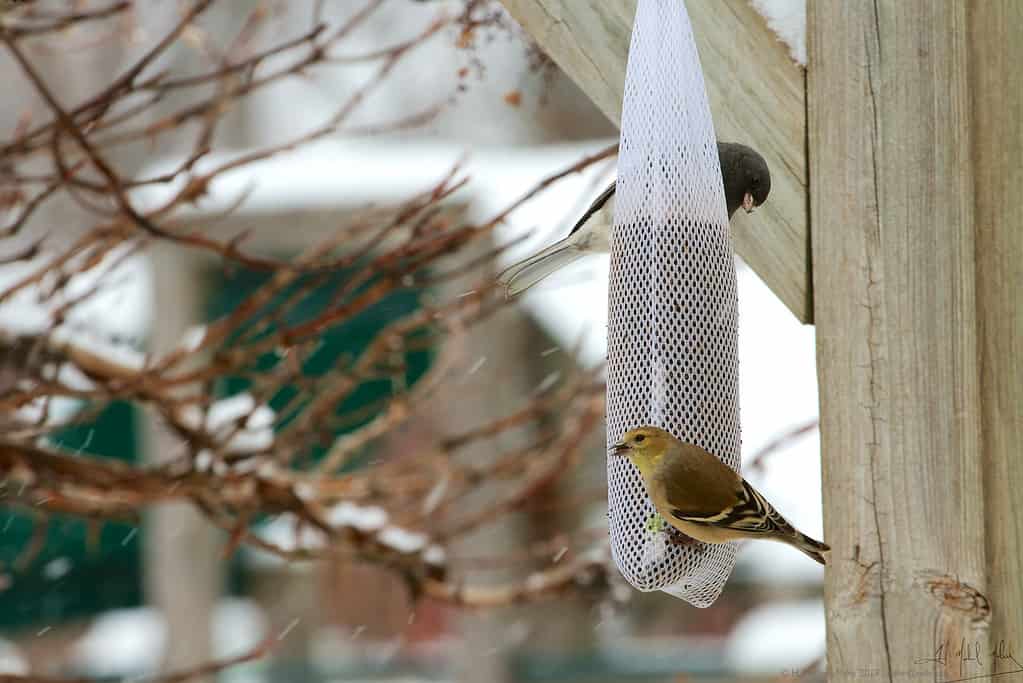
Nyjer feeders are popular for birds in the winter months when natural sources of seeds have been depleted.
©H. Michael Miley / CC BY-SA 2.0 – License
9. Platform Feeder
Straightforward and easy to assemble, platform feeders offer birds space to land and move around while they eat. This style is also known as a tray feeder, and they can either hang from trees or be mounted to poles.
They are easy to keep clean and full of seeds, although there is a risk of attracting squirrels. Birds can also fling out seeds, making it necessary to refill the feeder more frequently.
Best for attracting: juncos and blackbirds
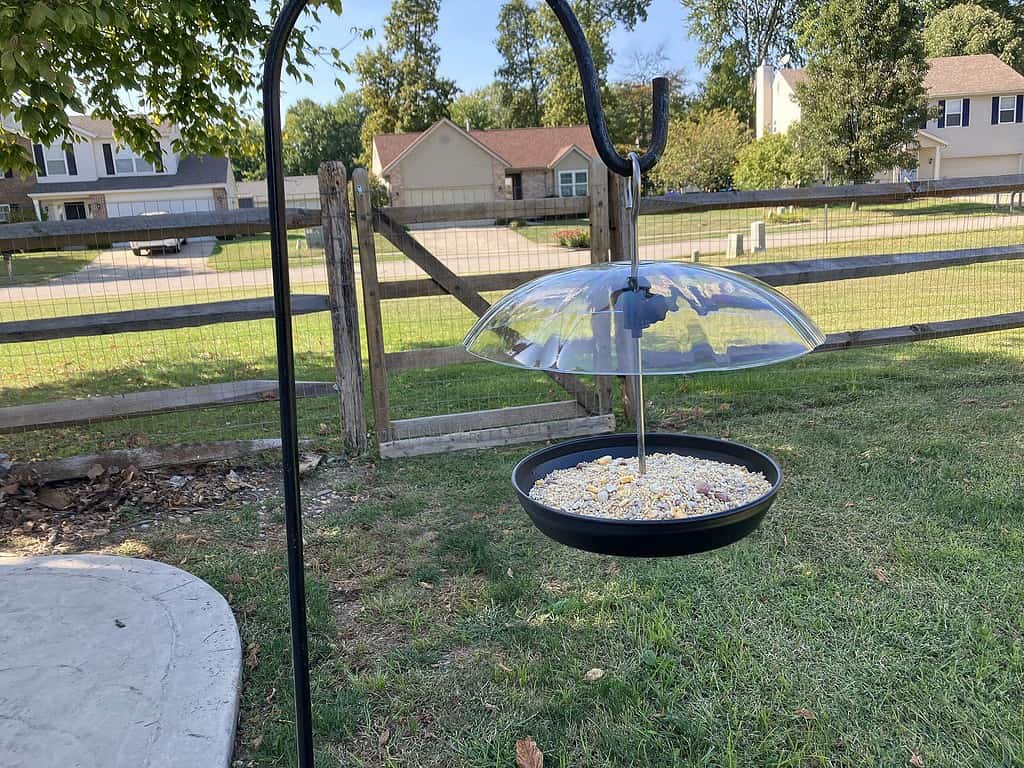
Platform feeders can include features like protective domes.
©Mcedm / CC BY-SA 4.0 – License
10. Hummingbird Tray Feeder
Like other nectar feeders, this type of bird feeder is specially designed to attract hummingbirds and often includes perches for the hummingbirds to rest while they eat. These feeders can be filled with a mixture of four parts water and one part sugar.
Some designs feature an ant moat to prevent bugs from invading the feeder. This style of bird feeder is easy to take apart and refill, making it a low-maintenance choice for a bird feeder.
Best for attracting: hummingbirds
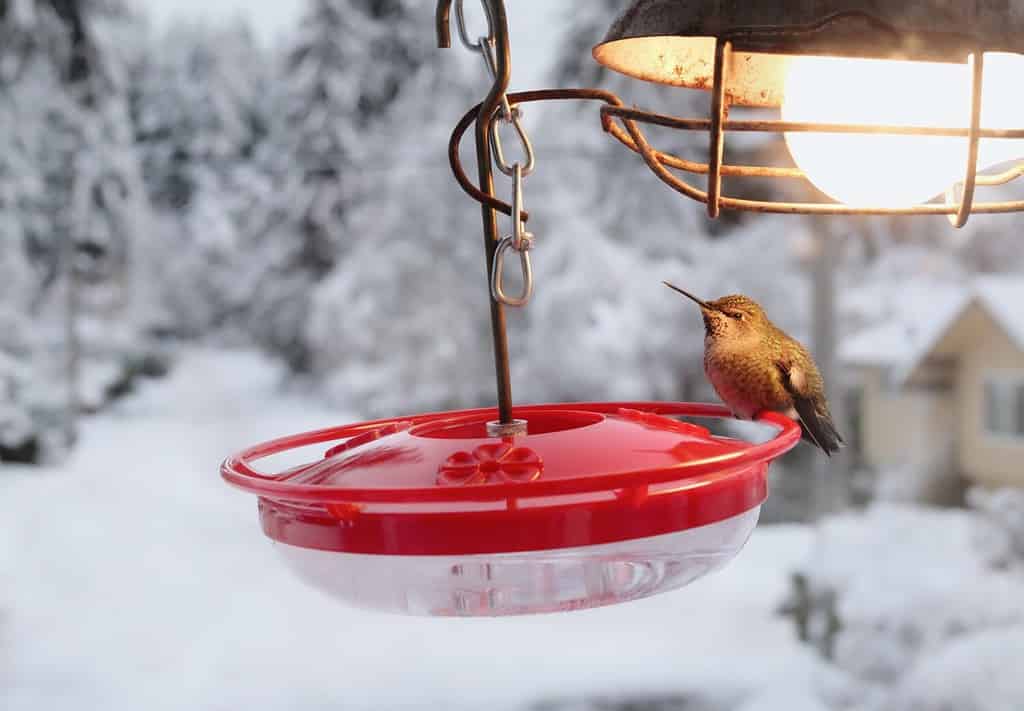
Hummingbird
tray feeders should be cleaned frequently to prevent bacterial growth.
©sophiecat/Shutterstock.com
11. Mealworm Feeder
Having a dedicated feeder in your yard for mealworms will make you a popular destination for birds. You can find both fresh and dried mealworms, and either will make a tasty and nutritious treat for winged visitors.
Try putting mealworms in a platform feeder to attract insect-eating birds. For the best results, try to place your feeder near trees or bushes that provide birds with shelter.
Best for attracting: Thrushes, wrens, bluebirds, chickadees, and kinglets
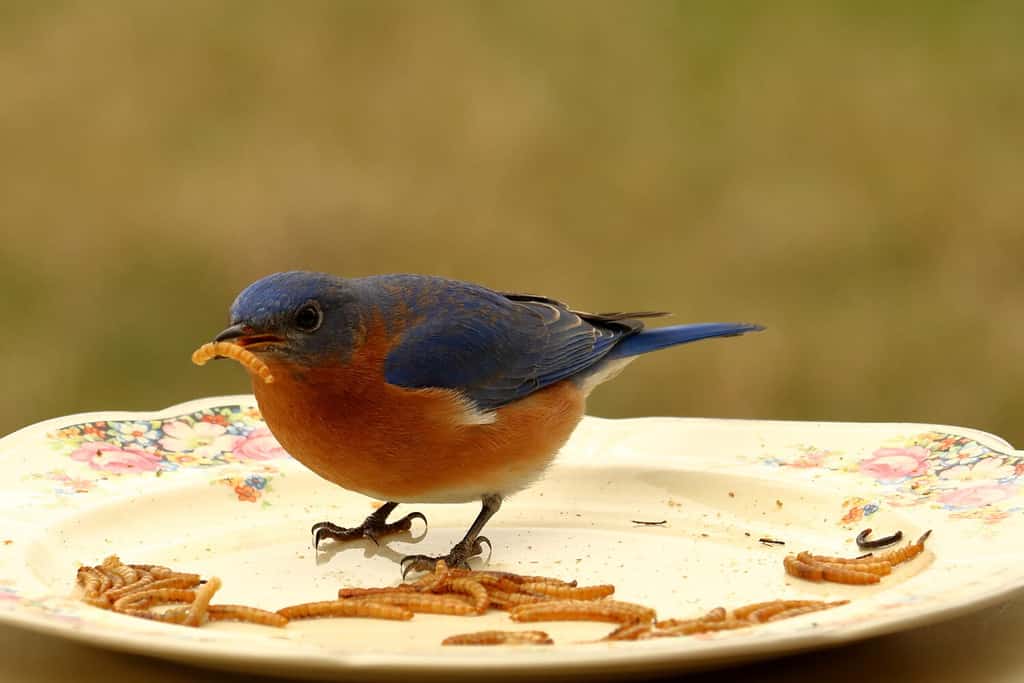
Mealworms are popular with birds for their high levels of fat and protein.
©Melody Mellinger/Shutterstock.com
12. DIY Feeders
While not as fancy or long-lasting as other types of bird feeders, do-it-yourself options are fun to make and can be put together with common household items.
- Pine cone feeder: Roll a pine cone in peanut butter, and then roll it in birdseed. Tie the feeder to a tree with a piece of string.
- Toilet paper tube feeder: Follow the directions above, using an empty cardboard toilet paper tube in place of a pine cone.
- Gelatin feeder: mix two packets of plain, unsweetened gelatin according to package directions. Stir in birdseed, then pour into cookie cutters. When set, remove the birdseed-gelatin feeders. Insert toothpicks for birds to perch on, then hang up in your yard.
Best for attracting: wrens, chickadees, buntings, and finches.

With some peanut butter and birdseed, a pine cone can serve as a bird feeder.
©Brannon_Naito/Shutterstock.com
| Feeder Type | Types of Birds |
|---|---|
| Suet | Woodpeckers, nuthatches, cardinals, blue jays, chickadees |
| Tube | Chickadees, sparrows, finches, tufted titmice |
| Nectar | Hummingbirds, orioles |
| Hopper | Cardinals, buntings, sparrows, tufted titmice |
| Oriole | Orioles |
| Peanut | Blue jays, cardinals, finches, woodpeckers, magpies |
| Window | Bluebirds, sparrows |
| Nyjer | Finches, sparrows, buntings, towhees |
| Platform | Juncos, blackbirds |
| Hummingbird Tray | Hummingbirds |
| Mealworm | Thrushes, wrens, chickadees, bluebirds, kinglets |
| Do-It-Yourself | Wrens, chickadees, buntings, finches |
The photo featured at the top of this post is © Valleyboi63/Shutterstock.com
Thank you for reading! Have some feedback for us? Contact the AZ Animals editorial team.






